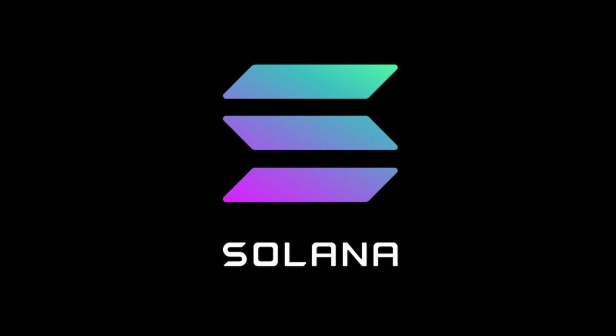A ton has occurred with Solana since this article was composed. We’ve distributed one more article on the most recent Solana refreshes here.
Solana ($SOL) is one of the most sweltering blockchains in 2021 – because of its staggering velocity and very modest exchange cost. This implies Solana can uphold countless decentralized applications without dialing back or having very high exchange costs (an issue as of now tormenting the Ethereum environment). Solana exchanges can cost just $0.001 USD.
Solana is taking on one of the greatest difficulties with existing blockchains-versatility. Planned starting from the earliest stage to have the option to handle more than 50,000 exchanges each second, Solana is worked considering adaptability and speed. This straightforwardly contends with other installment frameworks like Paypal or Visa. On top of this, Solana can accomplish sub-second affirmation times, meaning clients don’t need to trust that their exchanges will be affirmed. This makes Solana a thought blockchain for decentralized money and exchanging – as merchants request close moment exchange times.
Solana accomplishes this mind boggling speed by settling how the blockchain tracks time and issue timestamps – utilizing an instrument called “proof of history”. Confirmation of history permits the Solana organization to synchronize their singular timekeepers to such an extent that they are all in concurrence with one another.
Furthermore, this is the justification for why Solana was created. With the ability to handle in excess of 50,000 exchanges each second, Solana has drawn in a few crypto defenders including FTX trade.
More deeply study FTX Trade.
Look at our video on what makes Solana so hot at the present time.
Foundation
Anatoly Yakovenko established Solana back in 2017. Yakovenko is a computer programmer that previously worked for Qualcomm and Dropbox with broad involvement with pressure calculations. He initially distributed the Solana white paper specifying Verification of History and how it very well may be utilized to accelerate both evidence of work and confirmation of stake-based blockchains.
Alongside Greg Fitzgerald, Solana’s CTO, as well as Eric Williams, they conceptualized a better approach for managing the throughput issues that were available in both the Bitcoin and Ethereum blockchains. They imagined a trustless and dispersed convention that takes into consideration more noteworthy versatility, which was the way Solana was conceived.
What is Solana? Key Developments
Solana brings a sum of 8 developments that are elite to its framework. The developments rotate around how data is sent inside an organization – with the target of making Solana as quick as how information moved.
Evidence of History (POH) – Cryptographic clock for the blockchain.
Tower BFT – Solana’s adaptation of the Viable Byzantine Issue Lenience (PBFT) framework
Turbine – Blockchain broadcasting convention.
Bay Stream – Sending convention without mempools.
Sealevel – Solana’s equal savvy contracts.
Pipelining – Exchange Handling Unit.
Cloudbreak – Records information base.
Archivers – Capacity of blockchain history.
We should investigate these critical developments thus.
Verification of History
Solana took to the local area another answer for make a blockchain more decentralized. The PoH framework implants authentic records of blockchain exchanges to demonstrate that exchanges without a doubt occurred before they are remembered for the disseminated record.
This is finished by what Solana calls the ‘Irrefutable Postpone Capability.’ On the Solana blockchain, exchanges are inserted with timestamps that assist with laying out the grouping of occasions that were handled before the most recent condition of the blockchain is communicated to the entire organization.
Exchanges are placed into blocks through Solana’s consecutive preimage safe hash, just alluding to hashes that can’t be adjusted. These hashes are then utilized as a contribution to the following exchange. Then, these sections are timestamped to record their genuine arrangement and at last, save time on having to revalidate each hash capability through and through.
TowerBFT
TowerBFT is Solana’s variant of the PBFT framework. The agreement calculation involves PoH as its cryptographic clock to reach blockchain agreement without causing gigantic informing above and exchange idleness.
Before the condition of the record is settled, validators vote on which adaptation of the record is exact. Then, their vote is locked out. This implies that they are precluded from making an alternate decision on a future form of the blockchain that doesn’t show that the record of the past decisions on it.
Turbine
Solana makes it simpler for information to be communicated to each blockchain hub by isolating them into more modest parcels. This assists Solana with addressing data transmission issues and increment its ability to settle exchanges quicker.
Inlet Stream
Solana can accomplish an organization throughput of 50,000 exchanges each second by facilitating the course of block affirmation. Bay Stream works with the course of exchange getting and sending even before the following arrangement of blocks for affirmation are settled.
Sealevel
Huge number of brilliant agreements run in lined up with one another to accomplish a more effective runtime for Solana. Exchanges that are in a similar condition of the blockchain can run simultaneously.
Pipelining
A bunch of blocks that contain exchange data is immediately approved and reproduced across all hubs in the organization. Solana does this by doling out a flood of info information onto various equipment that is liable for every one of them.
Cloudbreak
Solana accomplishes versatility without any gamble of sharding by putting together a data set that at the same time peruses and composes exchange input. Cloudbreak lays out an information structure where exchanges are handled in programming that uses each equipment liable for ordering information.
Archivers
Solana’s organization permits each hub to recreate data from the blockchain as per the space accessible on their equipment. Archivers download their particular information from validators, and this information is open to the organization.
Programming on Solana
Solana has support for shrewd agreements that permit designers to compose decentralized applications on the organization. This implies it’s feasible to run decentralized trades, loaning stages, and NFT commercial centers on Solana. The local language to program in Solana is RUST. RUST is a programming language that stresses execution and unwavering quality over convenience. This implies that creating for Solana is more diligently than Ethereum (which utilizes strength), yet in addition can deliver more dependable dapps.
Solana is generally divergent as far as programming language and organization plan – making it totally different from Ethereum (which is apparently the greatest brilliant agreement network today).
Solana NFT
Solana permits clients to mint, sell and exchange NFTs for a bigger scope. The commercial center hosts over 5.7m NFTs and the typical mint expense is around US$1.5 per NFT.
Solana permits makers to have NFT commercial centers on the Solana biological system.
SolSea is Solana’s very first NFT commercial center. SolSea offers makers instruments for creating and dealing with their NFT assortments. Other NFT commercial centers on Solana incorporate Wizardry Eden, Solanart and Metaplex.
SOL Token ($SOL): What is it and what are its purposes?
Solana’s local token or coin is known as $SOL. Right now, there is a coursing supply of 26 million SOL and it has a greatest stock of 489 million SOL.
Marking SOL
Solana is a Proof-of-Stake (PoS) network with designations. Validators process exchanges on and run the organization. Since validators are likewise picked in light of how much stake they hold in the organization, the greatest marked validators are probably going to be decided to enter exchanges on the blockchain. Also, when they do this, they acquire rewards. Hence validators would need to captivate delegators (i.e.non-validator SOL token holders) to distribute tokens to them to stake for their benefit. Validators do this by offering lower commissions, which delegators should pay to validators as an expense addressing a level of the prizes procured.
Instructions to Stake SOL Tokens
Marking SOL tokens can likewise be a way for clients to procure a benefit on the off chance that they are simply holding their tokens.
Move tokens. To stake SOL tokens, clients need to first exchange their tokens in quite a while that help marking. These are wallets like Record Nano X.
Make a stake account. A stake record will have an alternate location from the upheld wallet that you will interface it with.
Select a Validator. In the wake of making a stake account, you can look over Solana’s validators to figure out who you’ll designate your SOL to.
Delegate your Stake. Whenever you have picked a validator, you can utilize your wallet to designate your stake record to them.
Solana accomplices with Serum ($SRM)
Serum is another rapid non-custodial spot and subsidiaries decentralized trade (DEX) based on Solana. The justification for why Serum needed to expand on Solana is that it needed to empower the best of both the concentrated and decentralized universes, or at least, a trade that can be impervious to oversight and non-custodial, yet quick, reasonable, and exceptionally fluid. Also, this is just attainable on the grounds that Solana empowers Serum to run on an on-chain focal cutoff request book (CLOB) that refreshes each 400 milliseconds.
What’s the significance here for digital currency and DeFi dealers? It implies that Serum will have the least inactivity and gas costs.
Study Serum in our full audit ($SRM)
End
The normal issue with the prior blockchains are issues concerning exchange settlement speed and data transfer capacity. With Solana’s new engineering controlled by a better approach to confirm exchanges and coupled mind
































